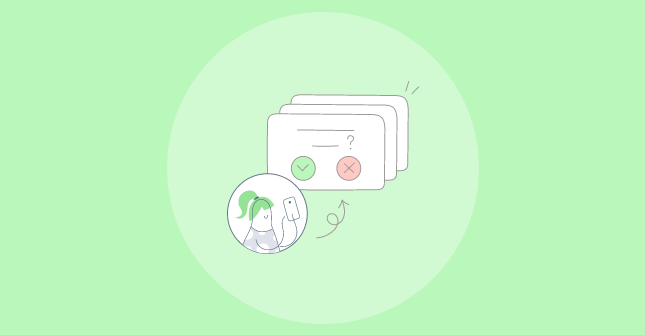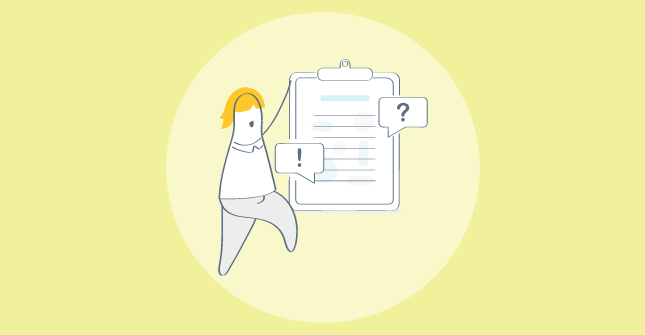Written and contributed by Curtis Morris, CEO @ Qualaroo
Few things are worse than pouring your first cup of coffee on Monday morning, grabbing the half and half out of the fridge and adding it to your coffee only to realize that it has gone bad.
The coffee is ruined.
You are going to be late to work if you make another pot.
Now you have to make a trip to the store for a new half and half.
Everyone realizes their refrigerator is full of perishable goods, but most do not realize that user feedback also has a shelf life.
One famous example of feedback with a shelf life can be found at Blackberry. When Apple and Google entered the smartphone market, Blackberry (armed with feedback!) took an “It’s OK—we’ll be fine” approach to competition. This confidence was fueled by the executive team at Blackberry believing that their users would not abandon the physical keyboard for a digital alternative. After all, users loved the tactile feedback and ease of use that a physical QWERTY keyboard offered. What the Blackberry team failed to realize was the feedback they gathered about their keyboard had a shelf life.
In early 2010 (3 years after the first iPhone launched), Blackberry realized that consumers valued other features over their keyboard but the damage had already been done. In 2012 the share price for Blackberry (BB) was down 95% from it’s all time high of $148.13. It only took Blackberry 4 years to go from a business that controlled nearly 50% of the world’s smartphone market to a company that had negligible market share and was struggling to keep itself afloat.
It’s impossible to say if a world class feedback cycle alone could have saved Blackberry, but one thing is certain:
Feedback has a shelf life and basing your business strategy on expired feedback is an unnecessary risk.
The good news is that keeping your user feedback fresh is pretty straight forward. All you need to do is ask the right person the right question at exactly the right time, and most importantly, act on what you learn. If the Blackberry executive team had not taken an “It’s OK—we’ll be fine” approach to competition and instead had put a feedback strategy in place that targeted both existing and potential customers, then the outcome of their company could have been very different.
Here is a straight forward feedback strategy that Blackberry could have implemented
The Right Person
In Blackberry’s case, there are at least 3 profiles for who the right person is, to survey:
-
Existing customers
-
Potential customers
-
Customers who are canceling their service (churning)
The Right Questions
Existing customers
-
Where do you use your Blackberry device most often?
-
What features would you like to see from your next Blackberry device?
-
Why are these features important to you?
-
-
When you replace your current phone do you plan to buy another Blackberry device?
-
Why or why not?
-
Potential customers
-
Why are you shopping for a new phone?
-
What factors most influence your decision to purchase (price / features / etc)?
-
What cell phone brands are you considering?
Customers who are canceling
-
Why did you decide to leave Blackberry?
-
What cell phone provider did you move to?
-
Why did you select this provider?
-
-
Is there anything else you would like to share about your experience with Blackberry?
The Right Time
Existing customers
-
Send an NPS survey every 6 months
-
Send user feedback survey (example above) during moments of truth (Renewal coming up, new phone purchased, etc..)
-
Ask user for feedback after every support interaction
Potential customers
-
When they visit your website, 7 to 10 seconds after landing on your homepage
-
Exit survey when they leave your website (if no website survey was given)
-
Retail stores (may require small incentive such as X% off a new device or a gift card)
Customers who are canceling
-
Make the survey a required part of the cancelation process
Customizing this feedback strategy to fit to your customer/prospect’s individual needs will result in a constant stream of relevant feedback for your product, sales, marketing and support teams. Once a feedback stream is established, you must use the feedback before the end of its shelf life.
The shelf life of your user feedback will vary based on several factors that exist both inside and outside of your business.
Here are a few things to keep in mind when trying to calculate the shelf life for your feedback

Building and maintaining a feedback loop based on these (and other) actions is a great way to ensure that your team is always armed with fresh & relevant feedback to improve your product, brand and service.
If you need help building your feedback loop or just want to chat about feedback in general we would love to hear from you.
FREE. All Features. FOREVER!
Try our Forever FREE account with all premium features!

 We'd love your feedback!
We'd love your feedback! Thanks for your feedback!
Thanks for your feedback!





